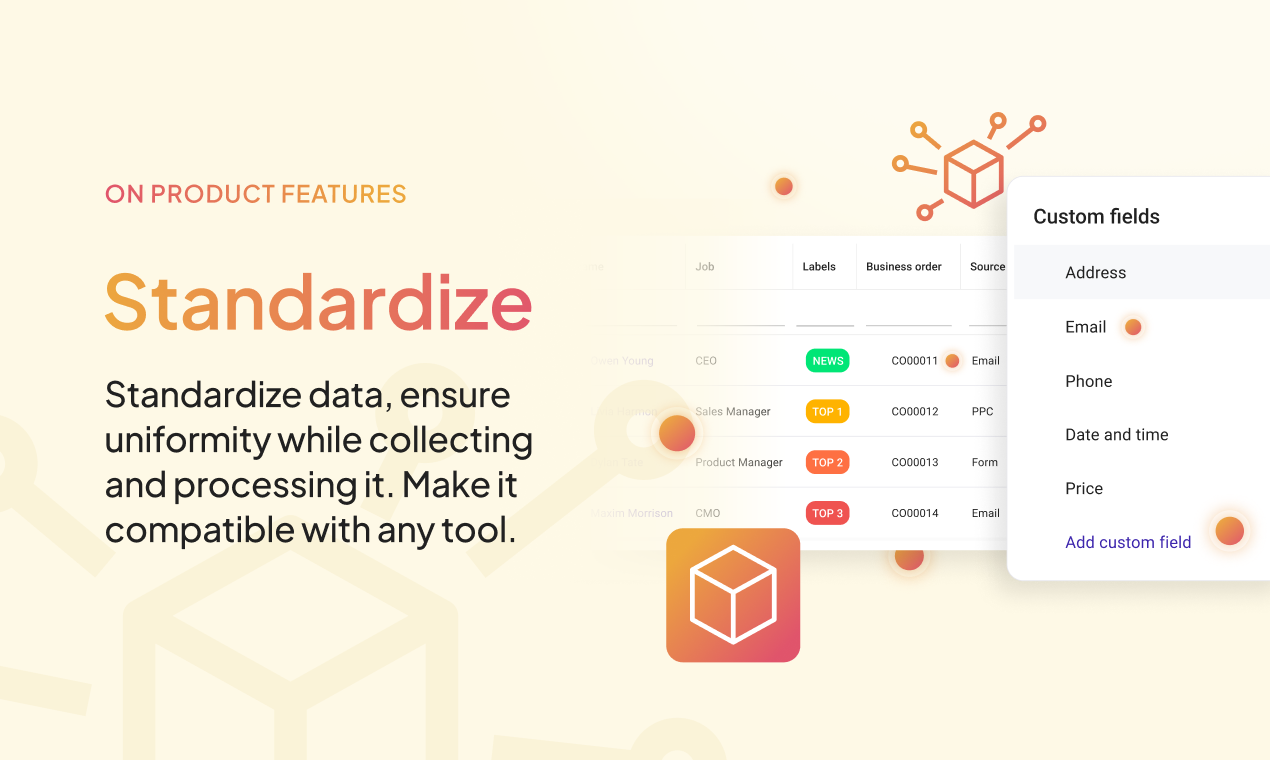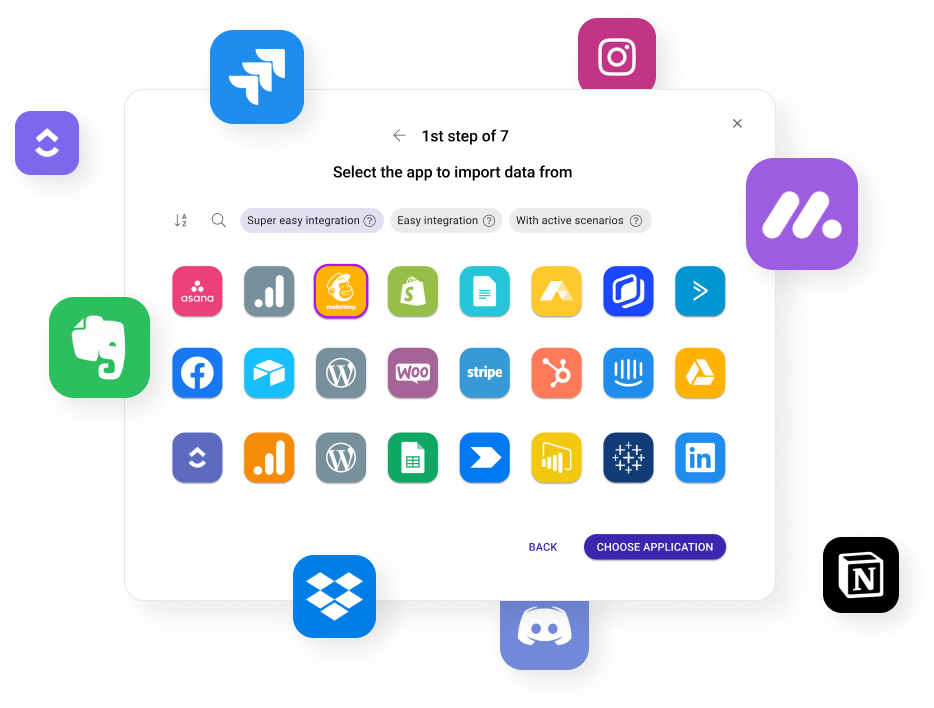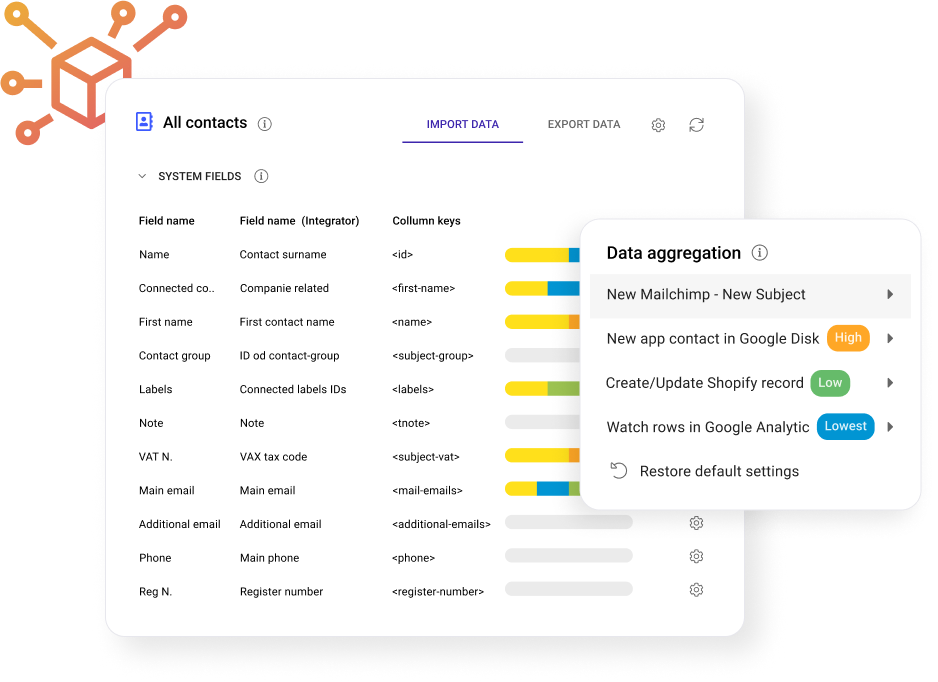It’s Time to Address the Issue
Let’s face it. You’re working with a number of cloud tools (an average company uses around 20-40 platforms), each of these platforms gathering and working with data saved in different formats. You are constantly switching between the open tabs, looking for that table, that e-mail, that photo, or that product number. The amount of time you spend only on manual data entry tasks is terrifying.
You’ve probably thought, “Wouldn’t it be amazing if I could connect data from different tools?” But you have now idea how to achieve it, as they have completely different formats.
Now imagine this: instead of endless one-on-one connections, you link all your tools into one shared database—a Master Single Source of Truth and manage everything from one central hub. Sounds like a dream? Let’s make it happen.
Data Standardization: How to Make Data Play Nice Together
In order to connect together data in different formats, it is neccessary to unite them into a unified format. We call this function Data Standardization. Everything else builds on top of that.
Data standardization ensures that your data is uniform, consistent, and compatible across all your tools. Imagine having a single standard template for contact information, sales records, customer interactions, or any other data type that includes all the fields required by hundreds of different platforms. With this standardized format, mapping data between tools becomes a breeze.
Get all your data from your tools under one roof and get to work.
How Boost.space Simplifies Data Standardization
With our platform, every piece of data that flows through your systems undergoes a data transformation process, turning it into a standardized format. This enables seamless interaction across your toolset—whether you are using CRM, e-commerce, or accounting platforms. The magic lies in our pre-configured data transformation maps, which automatically adapt your data to fit the needs of any tool.
When you integrate a new tool, Boost.space generates a data template that reads the incoming data, converts it to the standard format, and makes it compatible with other databases. This process enhances business process automation, eliminating manual data entry and ensuring consistency in operations.
Why Your Business Needs Data Standardization
- Automated Workflows: When your data is standardized, automating tasks across multiple platforms becomes easier. No more manual mapping or data entry—let our automated workflows handle it for you.
- Operational Efficiency: By automating data consolidation and creating standardized templates, Boost.space helps your business run more smoothly. Consistency in operations leads to better decision-making and improved overall performance.
- Scalable Solutions for Growing Businesses: Standardized data formats ensure that adding new tools to your stack won’t disrupt your workflows. It’s a scalable solution that prepares your business for growth without the usual headaches.
Consolidate and conquer. Make your data work together and build a Single Source of Truth.
Coming Soon: AI-Powered Data Standardization
Our team has been hard at work, so that soon Boost.space users will be able to leverage our innovative AI-driven features, which will further improve the data standardization process. Let’s take a closer look:
Automatic Field Mapping
This function enables you to convert data from various sources and map fields automatically, eliminating manual work. Our AI engine maps fields from your tools to our data modules.
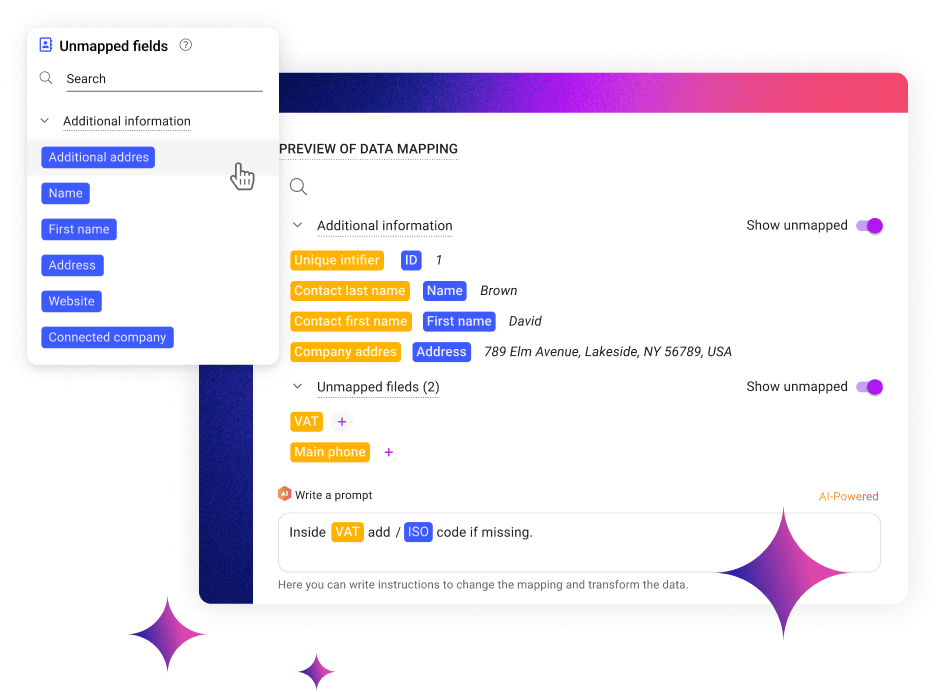
AI-driven Field Mapping
Data Transformation
This feature is here to standardize various data formats within a single column, ensuring consistency and reliability and preparing your data for seamless integration and analysis.
With Boost.space, data transformation happens automatically, ensuring that all your data is compatible across your entire toolset.
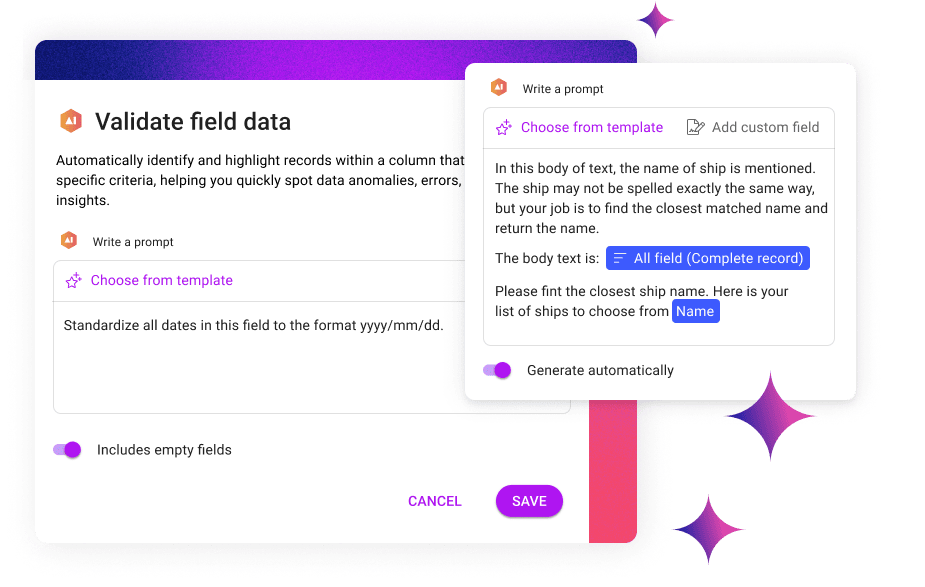
AI-driven Data Transformation
Start Your Journey to Data Harmony Today
Remember that data should empower, not hinder your business.
By leveraging our data standardization features, you’re taking the first step towards smooth operations and workflows, with a unified dataset that stands as a solid foundation of accurate, uniform, and compatible data. Standardized data are also the first condition of other advanced data management features that help you enrich your data with relevant information and then sync and streamline it to other platforms. But more on that later.
Transform your business, streamline your processes, and watch as your operations become more efficient than ever.
